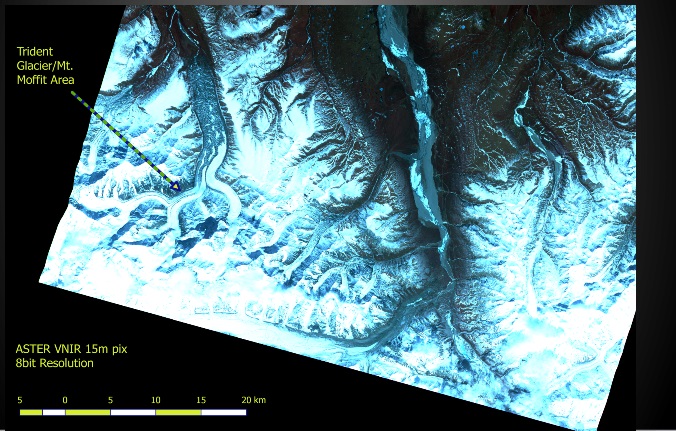Emission
A lot of light sensed by our instruments is reflected light,
not originating with the target. However, similar to a black
body, Earth (and other bodies) absorb a fraction of the energy
from light and re-emitting it, generally in the infrared
spectrum. As Earth is not a uniform material the variances is
emission from different materials and features can be used to
gather data that we would not ordinarily see with our eyes,
but which would be expected, and in turn create visual data
that let us visualize information that is otherwise invisible
to us. We are used to seeing true-color images; images where
green is green, red is red, and etc. Like our eyes, we map out
color on a Red-Green-Blue array. By substituting that we
normally see, such as blue, with a wavelength in the infrared,
we can create false-color images. That is, an image that would
appear as if we could see infrared as if it were blue, for
instance. We can also just flat out substitute colors that we
think would enhance or improve data visually - so as to
highlight features or to blend those that are insignificant.
In the image below, ALL visual bands were replaced with an
infrared wavelength. The resulting image is a false image; but
since we can only see in a combination of Red-Blue-Green, the
image looks to us very blue. This is because the infrared
wavelength assigned to blue is very strong, while the other
wavelengths are relatively weak, or dim.
